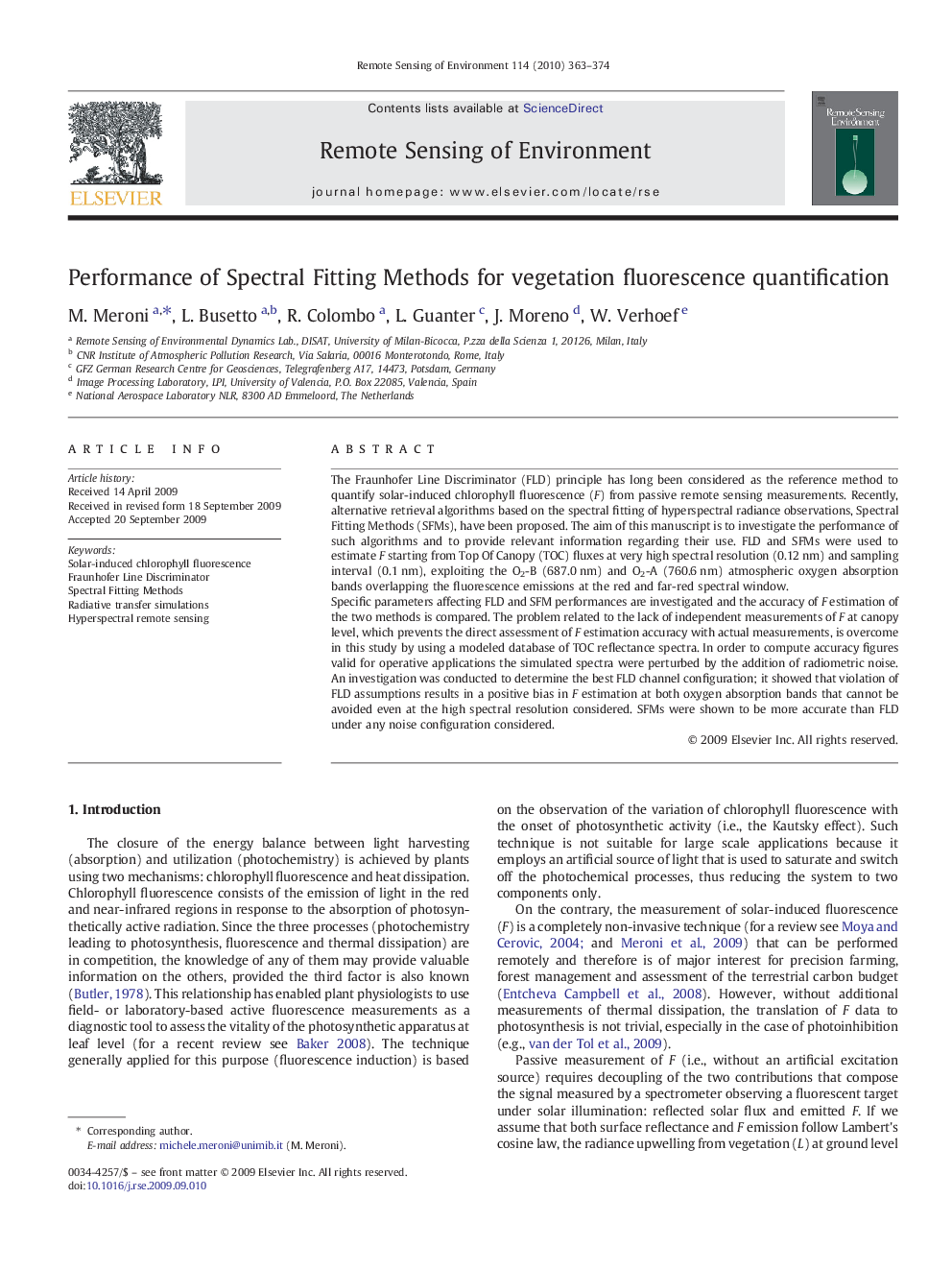| Article ID | Journal | Published Year | Pages | File Type |
|---|---|---|---|---|
| 4459995 | Remote Sensing of Environment | 2010 | 12 Pages |
The Fraunhofer Line Discriminator (FLD) principle has long been considered as the reference method to quantify solar-induced chlorophyll fluorescence (F) from passive remote sensing measurements. Recently, alternative retrieval algorithms based on the spectral fitting of hyperspectral radiance observations, Spectral Fitting Methods (SFMs), have been proposed. The aim of this manuscript is to investigate the performance of such algorithms and to provide relevant information regarding their use. FLD and SFMs were used to estimate F starting from Top Of Canopy (TOC) fluxes at very high spectral resolution (0.12 nm) and sampling interval (0.1 nm), exploiting the O2-B (687.0 nm) and O2-A (760.6 nm) atmospheric oxygen absorption bands overlapping the fluorescence emissions at the red and far-red spectral window.Specific parameters affecting FLD and SFM performances are investigated and the accuracy of F estimation of the two methods is compared. The problem related to the lack of independent measurements of F at canopy level, which prevents the direct assessment of F estimation accuracy with actual measurements, is overcome in this study by using a modeled database of TOC reflectance spectra. In order to compute accuracy figures valid for operative applications the simulated spectra were perturbed by the addition of radiometric noise.An investigation was conducted to determine the best FLD channel configuration; it showed that violation of FLD assumptions results in a positive bias in F estimation at both oxygen absorption bands that cannot be avoided even at the high spectral resolution considered. SFMs were shown to be more accurate than FLD under any noise configuration considered.
